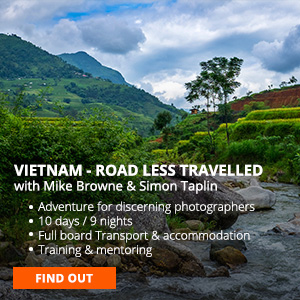Composition Exercise Pt. 1
When we are in some beautiful place we have a sensory experience of it, temperature, smells, sounds, air movements, whether you’re happy or sad. They all combine together as a memory of somewhere or something. But a photo has only the visual impact to rely on.
So here’s an exercise to help all photographers improve their composition. Spend a day or more photographing a ‘standard’ focal length of 50mm. If you don’t have a standard 50mm lens you can set your zoom to 50mm and leave it there. Use tape to hold it in place if you’re unable to resist zooming. And NO CROPPING ALLOWED compose the image in the camera.
You’ll also need to think more about finding good light because you won’t have the benefit of using the different focal lengths to change how the image looks I’ll show you what I mean in the video. If you’re not sure about any of this watch Focal Length Explained first.
In this video I’m going to do the exercise myself and talk you through what I’m doing and why. To make it extra tricky the light was awful on the day I did it so I had to think hard about my composition.











































